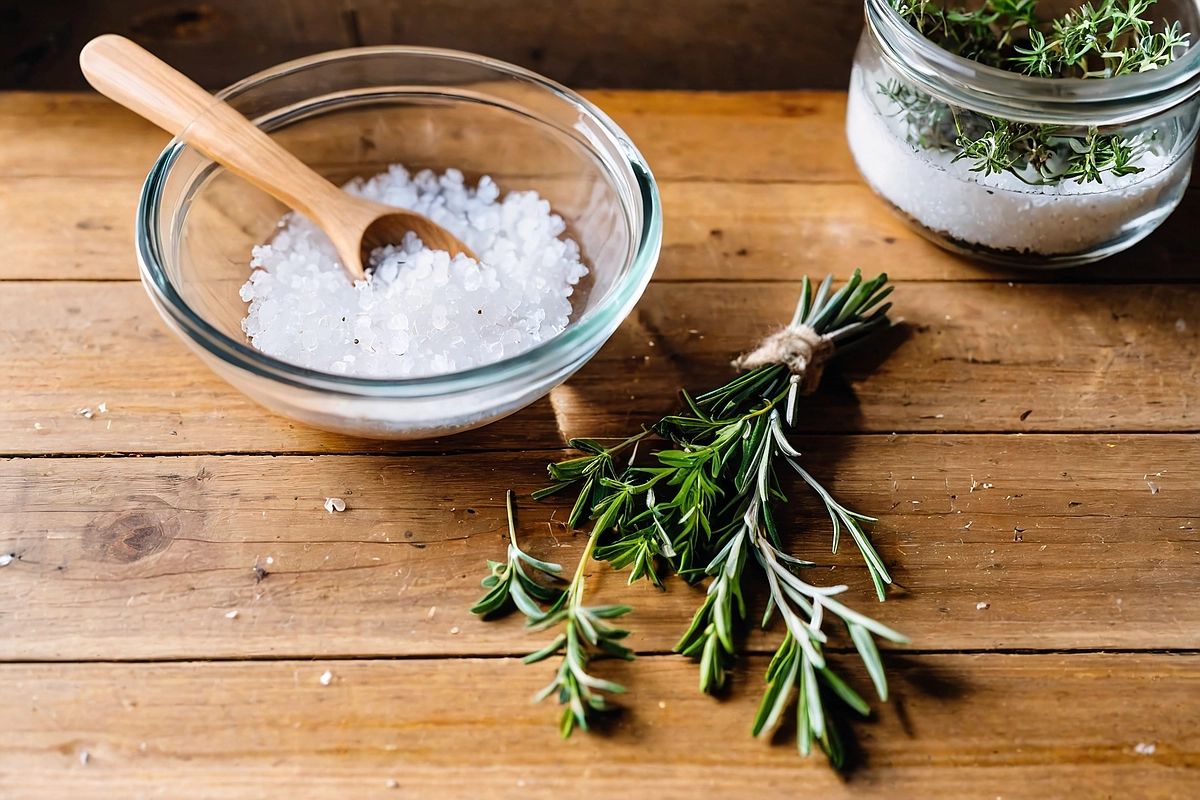Brine has been a staple in kitchens and industries for centuries. However, do you know what the formula for brine is, and how it can transform your cooking and food preservation techniques? In fact, understanding this simple solution is crucial to achieving the perfect flavor and texture in your dishes. In this comprehensive guide, we’ll explore the science behind brine, its formula, how to make it, and why mastering these basics is essential for both beginners and seasoned cooks alike.
Whether you’re a home cook looking to enhance your meals or someone curious about the chemistry of food, understanding what the formula for brine entails is essential. Let’s dive into the details!
What is Brine? Understanding the Basics
To begin, let’s clarify what brine is. Brine is essentially a solution of salt (sodium chloride) dissolved in water. It’s used in cooking, food preservation, and various industrial applications. This mixture plays a significant role in enhancing the flavor, tenderness, and shelf life of different foods, such as meats, vegetables, and seafood.
There are several types of brines, each serving different purposes:
- Wet Brine: A liquid solution where salt, and sometimes sugar and spices, are dissolved in water.
- Dry Brine: A method where salt and other seasonings are rubbed directly onto the food without any added water.
- Pickling Brine: A saltwater solution often combined with vinegar and spices, used for pickling vegetables.
- Fermentation Brine: A saltwater mixture that creates the right environment for fermenting foods like sauerkraut and kimchi.
Understanding these different types of brine will help you apply the formula for brine correctly based on your specific needs.
Chemical Composition of Brine: What is the Formula for Brine?
To fully understand what the formula for brine is, let’s break down its chemical composition. Essentially, brine is composed of sodium chloride (NaCl) and water (H2O). In simplest terms, the basic formula can be represented as:
- Brine Formula: NaCl + H2O
This formula highlights the two key components: salt (NaCl) and water. However, the concentration of salt in the water is crucial to determining the effectiveness of the brine. This concentration is typically measured as a percentage of salt by weight relative to the total amount of water.
For example, a common brine solution might consist of 5% to 10% salt by weight, depending on the desired outcome—whether it’s for enhancing flavor or preserving food. This is why knowing what the formula for brine means in terms of its salt concentration is critical.
How to Get the Right Salt-to-Water Ratio for Brining
At its core, the foundation of any brine solution lies in the correct salt-to-water ratio. Indeed, this ratio dictates the concentration and strength of the brine, impacting its ability to penetrate food and achieve the desired results. Typically, the formula for a basic brine is:
- Standard Brine Ratio: 1 cup of salt to 1 gallon of water
This basic formula works well for most general-purpose brining, but adjustments can be made depending on the type of food and desired flavor intensity. For example:
- For Vegetables: A lighter brine with a 2-3% salt concentration.
- For Meat and Poultry: A stronger brine with a 5-8% salt concentration.
Understanding what the simple brine formula is in terms of these ratios will help you customize the brine solution for different uses.
Why Brining Works: The Science Explained
Now that we know what the formula for brine is, let’s explore how it works. Brining relies on a process of osmosis, where water and dissolved salt move through cell membranes. Here’s how it enhances food:
- Moisture Enhancement: Salt in the brine draws water into the food, improving texture.
- Flavor Enhancement: The brine infuses flavor deep into the food, beyond just the surface.
- Texture Improvement: The salt breaks down muscle fibers in meat, tenderizing it.
When you understand what the formula for brine achieves at a molecular level, it becomes clear why this simple solution has such a powerful impact on food.
Easy Steps to Prepare a Basic Brine Solution
Creating a brine solution at home is simple once you know the formula for brine. Follow these steps to make a basic brine solution, you can also check out this simple brine formula for chicken to make a flavorful and moist dish:
- Measure Your Ingredients: Start with 1 cup of salt per gallon of water for a standard brine.
- Dissolve the Salt: Heat the water slightly to help dissolve the salt completely.
- Add Flavorings (Optional): Include sugar, herbs, or spices for additional flavor.
- Cool the Brine: Allow the brine to cool to room temperature before using.
- Submerge the Food: Place the food in the brine solution, ensuring it is fully submerged.
- Brine Time: Let it brine for the appropriate amount of time based on the type of food.
Knowing what the formula for brine is and how to prepare it properly ensures that you achieve the best results every time.
Tips for Measuring Salt Concentration in Brine: Tools and Techniques
Without a doubt, calculating the right brine ratio is essential to understanding what the formula for brine is. Ultimately, the strength of the brine solution depends on the correct percentage of salt. To ensure accuracy, here are some tools and techniques to get it right:
- Brine Calculator: Online tools can help you calculate the correct salt-to-water ratio.
- Salinity Measurement: Use a salinity meter or hydrometer to check the salt concentration.
- Weight-Based Measurements: Weigh the salt and water for precise ratios.
By mastering these calculation methods, you ensure the brine solution is effective and safe for its intended use.
Popular Brine Ratios for Different Foods
Different foods require different brine ratios. Here’s a quick guide:
- Light Brine (2-3% salt): Ideal for pickling delicate vegetables like cucumbers or peppers.
- Moderate Brine (5-8% salt): Perfect for poultry and seafood, enhancing flavor without overpowering.
- Strong Brine (10-15% salt): Used for preserving foods for longer periods or for more intense flavoring.
Understanding what the formula for brine entails for each type of food helps you choose the right brine solution.
How Brining Improves Taste and Tenderness
Brining is a popular method for enhancing the flavor and texture of various dishes. Indeed, knowing what the formula for brine is can help you get the best out of your ingredients. Specifically, here’s how brine improves cooking:
- Tenderizes Meat: Brine breaks down muscle fibers, making meat more tender.
- Adds Moisture: Brined food retains more moisture, preventing dryness during cooking.
- Deep Flavor Penetration: Brine infuses flavor deep into the food, rather than just on the surface.
Whether you’re preparing seafood, poultry, or vegetables, this ultimate guide on chicken brine recipes can help you achieve the perfect flavor and texture.
Different Types of Brine Solutions: Choosing the Right Brine for the Job
Knowing what the formula for brine is also involves understanding the different types of brines and their applications:
- Basic Brine: Just salt and water; used for general purposes.
- Flavored Brine: Includes additional ingredients like sugar, herbs, or spices for added flavor.
- Curing Brine: Stronger brine solutions used for curing foods like fish or hard cheeses.
By choosing the right type of brine, you can maximize the benefits of this simple solution.
Using Brine for Long-Term Food Storage
Brine is not just for flavoring; it’s also an effective method for preserving food, similar to other preservation techniques like using sourdough discard recipes. By understanding what the formula for brine is, you can create a solution that inhibits bacterial growth, thus extending the shelf life of various foods.
- Pickling: Brine combined with vinegar is used to preserve vegetables like cucumbers, carrots, and onions.
- Fermentation: A saltwater brine creates the right environment for fermenting foods like sauerkraut, kimchi, and pickles.
Knowing what the formula for brine is helps ensure that your preservation methods are safe and effective.
Brine in Industrial Applications
Beyond the kitchen, brine has numerous industrial uses. Understanding what the formula for brine is can also provide insight into its applications in areas like:
- Chemical Production: Used in processes like chlor-alkali production.
- Refrigeration: Brine is used as a heat transfer medium in cooling systems.
- De-icing Roads: A salt brine solution is commonly used for de-icing and preventing ice formation on roads.
Brine’s versatility in these applications showcases its importance across various industries.
Common Mistakes When Making Brine
Even if you understand what the formula for brine is, there are some common mistakes that can affect your results:
- Using the Wrong Salt: Not all salts measure the same; use kosher or table salt based on your brine recipe.
- Over-Brining: Leaving food in brine for too long can lead to overly salty or mushy results.
- Incorrect Ratios: Failing to measure accurately can impact the effectiveness of the brine.
Avoiding these mistakes ensures that your brining efforts are successful.
Tips for Successful Brining
Here are some tips to help you master the art of brining:
- Use the Right Equipment: Choose a non-reactive container (like glass or stainless steel) for brining.
- Keep It Cold: Always brine food in a cool environment for the best results.
- Adjust Flavorings: Feel free to experiment with herbs, spices, and sweeteners to customize your brine.
By understanding what the formula for brine is and following these tips, you can achieve perfect results every time. Also, learn how to store sourdough bread to keep it fresh after brining it for flavor.
FAQs
What is the Formula of Brine Solution?
The formula for a brine solution typically consists of sodium chloride (NaCl) dissolved in water (H2O). The exact ratio depends on the intended use, such as 5-8% salt concentration for cooking or up to 15% for preserving.
What is the Salt and Sugar Ratio for a Brine?
A common salt and sugar ratio for a brine is 1 cup of salt to 1/2 cup of sugar per gallon of water. Of course, you can adjust this according to your flavor preferences and the type of food being brined.
How to Make Brine Solution?
To make a brine solution, dissolve the desired amount of salt (and sugar, if using) in water. Heat gently to help dissolve the salt, then cool to room temperature before using.
How Do You Calculate Brine Ratio?
To calculate the brine ratio, measure the amount of salt relative to the weight or volume of water. For example, a 5% brine means 5 grams of salt per 100 milliliters of water. Use tools like a brine calculator for accuracy.
What are the different types of brine?
Basic, flavored, curing, and pickling brines, each with specific uses and concentrations.
Conclusion
Understanding what the formula for brine is can significantly elevate your cooking and food preservation techniques. By mastering the science behind brine, using the correct ratios, and knowing how to avoid common mistakes, you can unlock the full potential of this simple yet powerful solution. Whether you’re brining vegetables, seafood, or experimenting with different types of brine, remember that the right formula is key to success.
By following these guidelines, you will master the art of brining and understand what the formula for brine truly is, making every dish you prepare flavorful and perfectly preserved!


1 thought on “What is the Formula for Brine? Master the Perfect Recipe!”